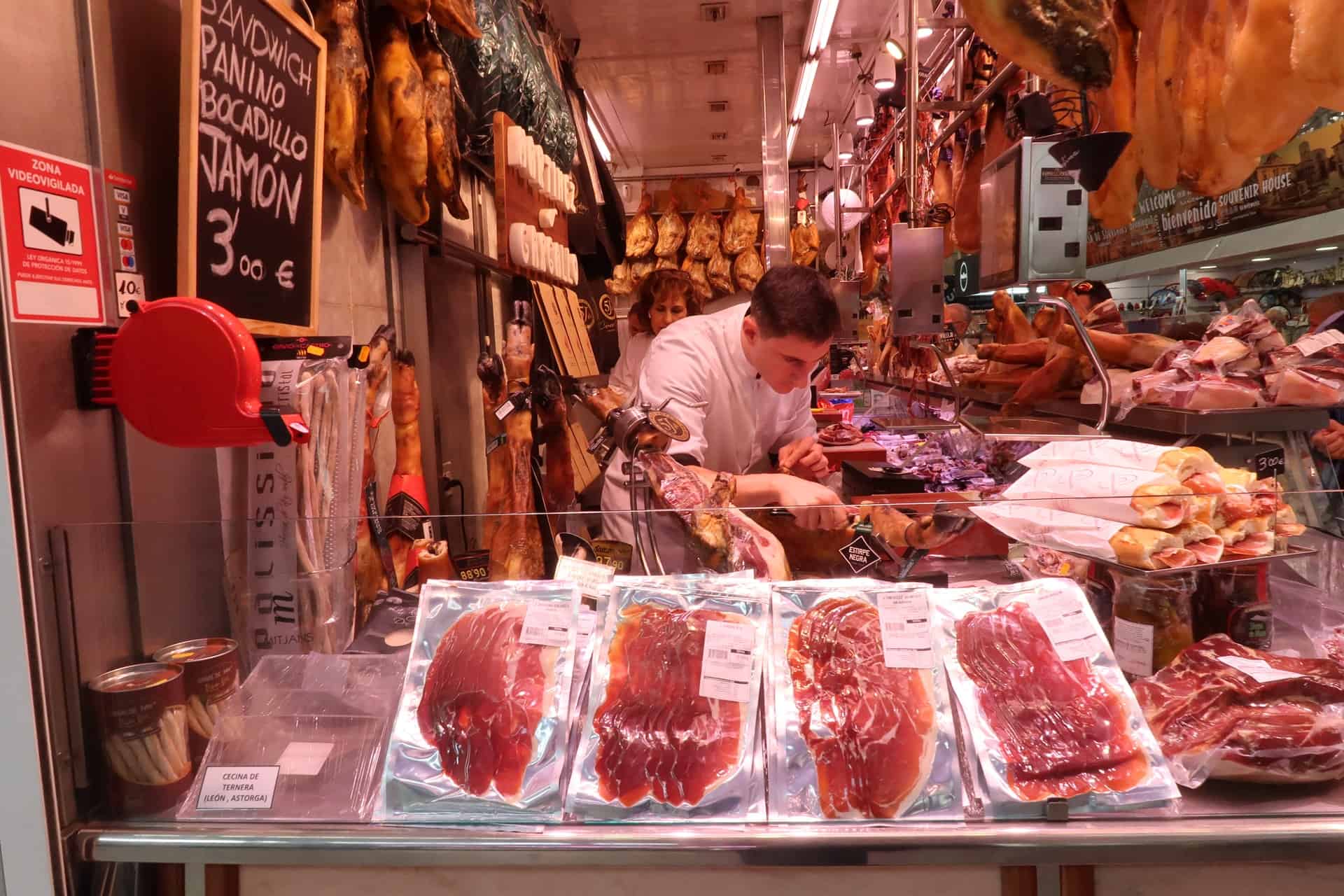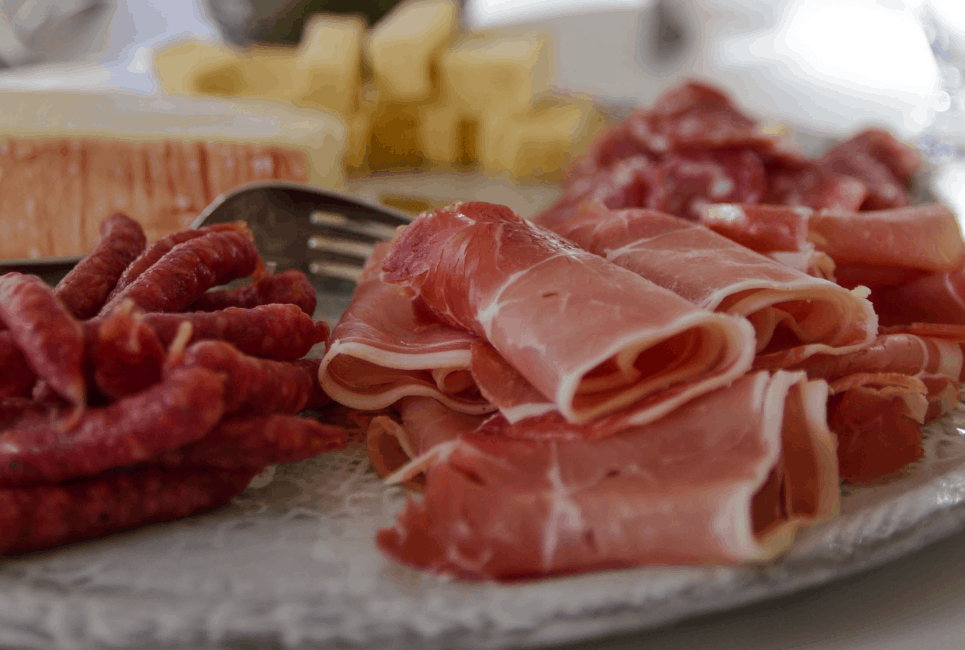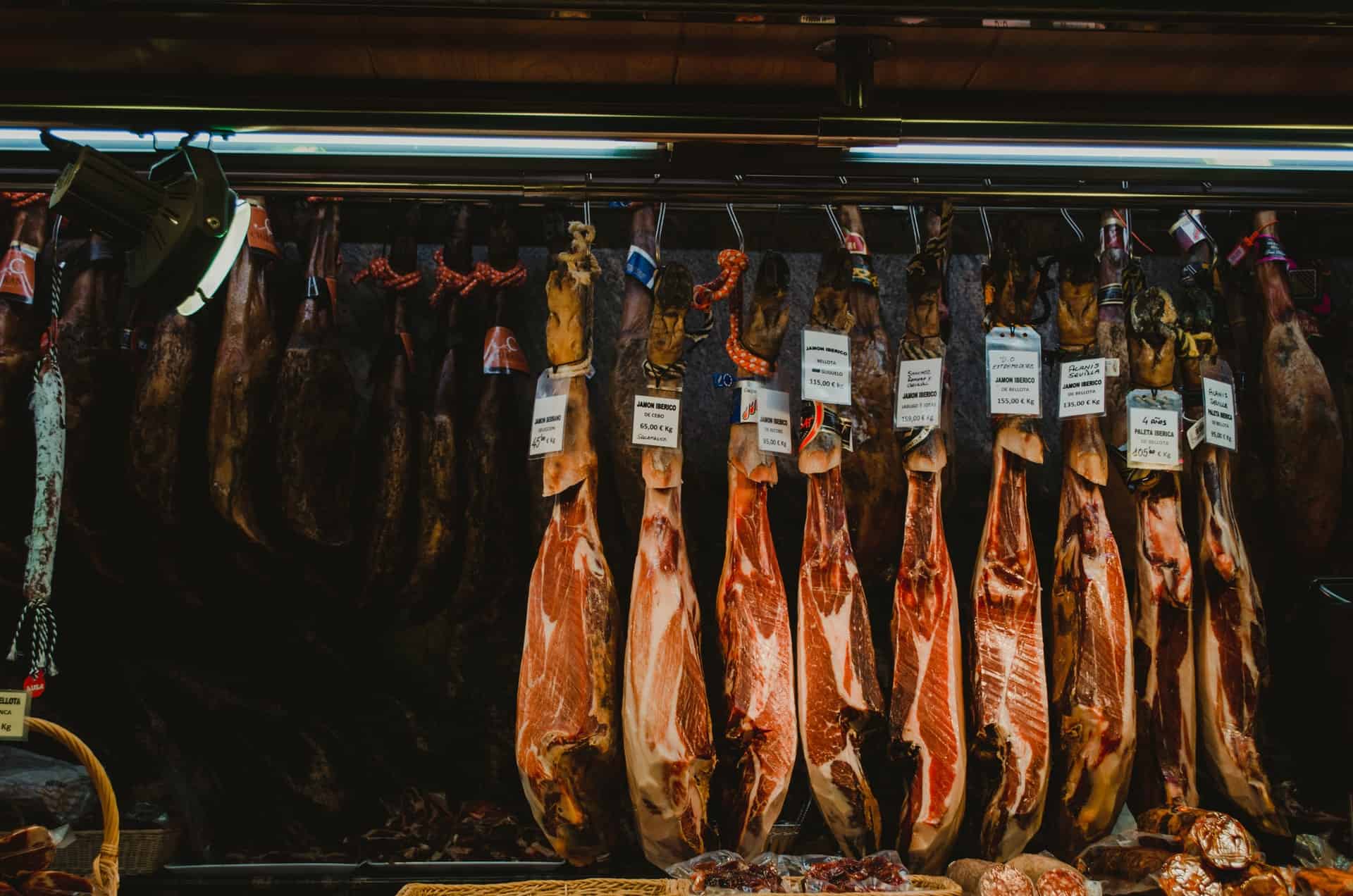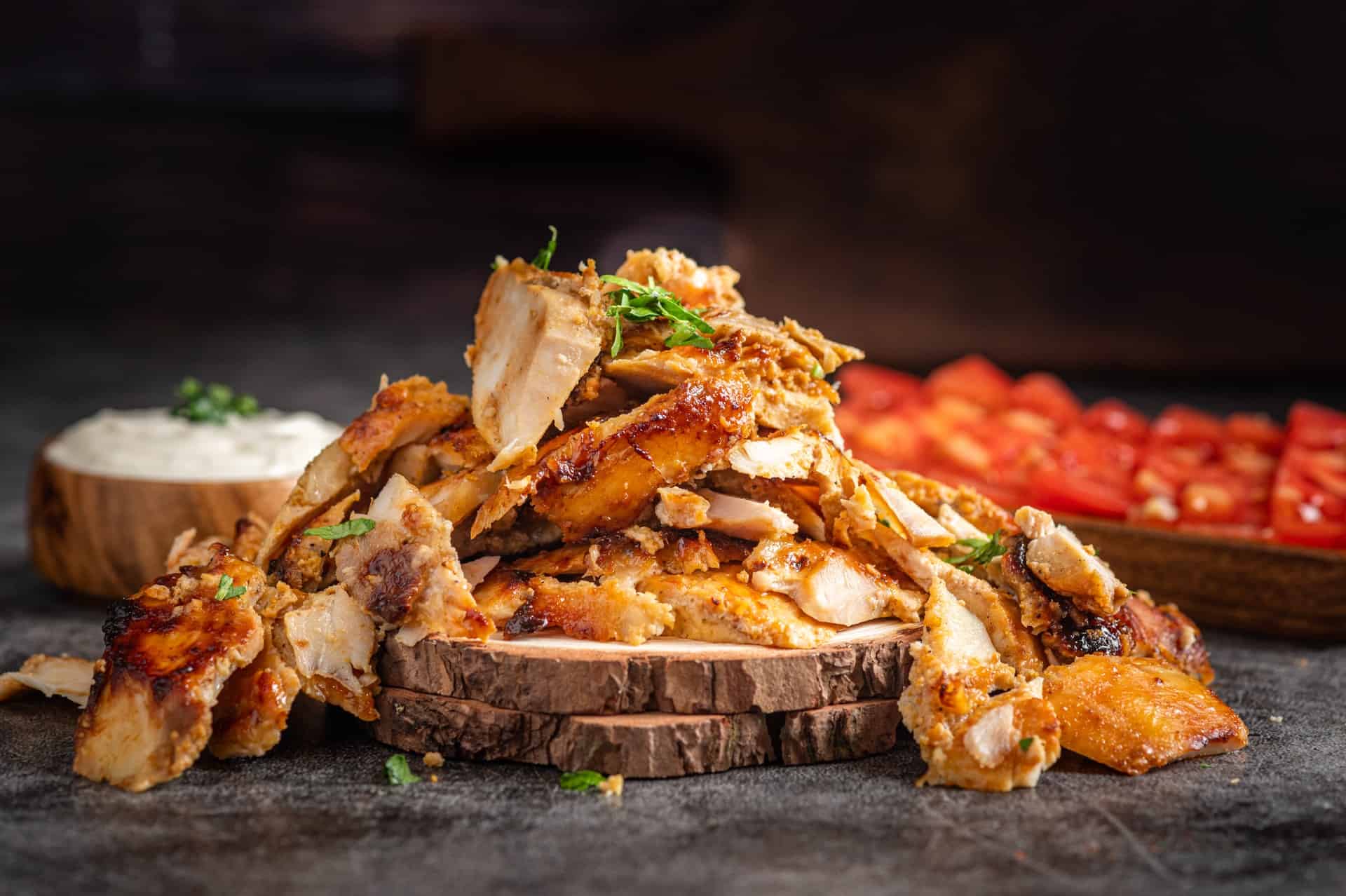- Salt Pork vs Pork Belly: Which Is Better? - September 1, 2021
- Ham vs Pork Explained: The Ultimate Guide - August 28, 2021
- Russian Sausage Guide and History: Best Types and Recipes - August 25, 2021
Ham and Pork are both versatile and delicious. While ham is a specific cut of pork itself, pork is raw, uncooked meat from any part of a domesticated pig’s body. Let’s talk about some of the major differences between Ham and Pork.
Main Differences Between Ham vs Pork
The Main Differences between ham vs pork include:
- While Ham is cured meat from a domesticated pig’s thighs, whereas pork is raw pig’s meat from any part of its body. In this sense, ham is pork, but all pork is not ham.
- Ham is usually used as a side dish in meals and as an extra addition in food, whereas pork can very well take the center stage in any dining experience.
- Ham comes in thin slices, and while it has a lot of range in itself, it’s not as versatile as pork.
- Ham is a Chinese invention that eventually found its way to America, whereas are a lot of dishes and preparation methods for Pork that are native to American soil.
- Ham is ready to eat when you buy it – it’s cured and salted meat after all, whereas pork is raw and needs to be cooked before you can dig in.
Ham – What You Need to Know
Like I said before, ham is cured and salted meat from a pig’s thighs, but how exactly is it made? Let’s talk about that, plus about all the ways you can eat ham.

How to Make Ham
Ham is usually sold in slices, but it isn’t made like that. The process usually involves preparing whole legs of pork by injecting them with a brine mixture, and then curing them in it for 4-8 days depending on the size of the ham. The cure mixture usually contains a combination of select spices and curing agents. People also add extra spices to the mix, like brown sugar or kosher salt.
Curing the meat for any longer than that doesn’t really do too much harm, but then the meat gets too salty and the quality drops. Once the curing is done, the pig’s leg is then smoked and cooked.
Not injecting the meat properly into all parts of the Ham makes it impossible for it to cure properly and uniformly. This results in pockets of simple smoked meat inside the meat when the smoking is done. As a general rule, inject the ham with 1/4th of its weight in brine. This means that a 2lb piece of pork has to be injected with 0.5lb of brine.
Once the ham is ready, it is either packed whole, or is cut into slices that are sold in grocery stores.
If you want to make ham at home, start with trying to make it with shoulder pork. This is called picnic ham, and while some say the taste isn’t that different, others maintain that leg of ham is better. Whatever you think about breakfast ham, it’s easier to prepare for first time ham makers.
Once you have the process down, you can move on to preparing ham the classic way.
What Does Ham Look Like?
Though ham is typically prepared from the hind legs, many parts of the pig can be cured and smoked the same way. Ham is available boneless, with bone, sliced, and many other versions.

Whole ham is usually oval in shape and narrows down at one end – like a cone. The surface can be glossy and brown with diagonal cuts visible on it, while the meat on the inside is light pink to pinkish grey.
Sliced ham has the same light pink to pinkish grey color, and it’s thinner. It may look like sliced sausage or bologna to the untrained eye, but ham lacks the marbled look and texture that most sliced sausages have.
What Does Ham Taste Like?
Ham is a satly, smoky pork cut that has a soft texture. It can sometimes even be slightly sweet, and the taste is best described as mild. It’s a fairly versatile cold cut that easily takes on any flavors that you cook or dress it with, and adds a fresh touch to any salad or cold appetizer when served with them uncooked.
How to Cook Ham
You don’t need to cook ham in order to eat or serve it – it’s first cured and then smoked – but that being said, many people prefer to give it their own little touch before it’s ready to eat. It can be fried, baked, served cold in sandwiches and salads.
Because of its unique flavor and versatility, ham is not just a side dish but has started replacing turkey on Thanksgiving. It may also have to do with how much easier ham is to prepare, but ham and turkey both actually cost almost the same – though boneless ham can be a bit more expensive.
Pork – What You Need to Know
Meat taken from a domesticated pig is called pork. It comes in countless cuts, varieties, and is used in multiple cuisines all over the world.

Importance in Global Cuisine
Pork is used in traditional and modern dishes all over the world, from the “wursts” of germany to the “Kielbasa” in Russia, and the Binagoongan from the Philippines, there’s no end to how popular and loved pork is.
A special breed of pigs called the Nero di Nebrodi is raised in Italy for artisanal salami, which is similar to wild boars and is allowed to roam freely until their day comes. The salami made this way is expensive and there are even competitions to see which one is the best in all of Italy.
The pig isn’t as lucky in all place though, with Muslim majority countries all over the world having banned the meat for not being halal. Jewish people don’t eat it either because it is also non-kosher. In areas and countries where Jews and Muslims make up the majority of the population, pork isn’t as well-loved as it is in the rest of the world.
What Does Pork Look Like?
Raw pork is a red meat that looks a bit like beef. It is dark red in color and the look can vary depending on what part of the pig’s body the meat is coming from. A trained or practiced eye, however, has no trouble telling different cuts and varieties of pork apart.
Different Pork Cuts
Being the global staple that it is, pork cuts vary greatly from country to country, and even for specific dishes. Here’s a basic guide to most of the major ones there are. These cuts are then divided into smaller pieces according to the buyer’s needs.
Here’s a list of the most common and widely used pork cuts:
- Pork belly: Pork belly is the flesh that lines the pig’s belly. It’s a great meat to grill or cure, with lots of fat incorporated in it.
- Pork butt: Pork butt actually comes from a meaty part of a pig’s shoulders. It’s used in dishes like pulled pork, slow cooked pork, and roasted or braised pork.
- Pork Loin: This cut of pork gives us the baby back ribs and includes other portions like the tenderloin and the fatback. They can either be cut into smaller portions, or the tenderloin can be grilled whole.
- Picnic Shoulder: The picnic shoulder comes from right below the pork butt, and is used as an alternate version of ham. It’s also used in making sausages and ground pork.
- Ham: Ham is the part of the pig you get from it’s hind legs, which is typically cured and smoked, and is also roasted.
- Pork Side: The side isn’t actually a side but the pig’s lower part. And this is the part of the pig where the pork belly, bacon, and pancetta come from.
- Pork Jowl: The pork jowl isn’t very well known in America, but it’s a common cut for sausages. Some places now serve pork cheeks and pork collars though, which come from the pork jowl.
- Spare Ribs: The spare ribs are usually cooked in a cooker or slow roasted.
- Pork Foot: The pork foot is quite literally that – the pig’s feet. They’re used in soups and broths to impart flavor to the concoction.
Apart from these major cuts, things like pork hocks, shanks and pork steaks are often consumed. Other parts of the pig that are popular include pork back fat, which is fat from a pig’s behind. It’s used in sausages to add some fat and moisture to them. On the other hand, pork lard is soft, rendered pork fat that can be used in place of oil and butter in the kitchen. This is a popular choice in the kitchen because of the flavor it gives to anything that’s cooked in it.
What Does Pork Taste Like?

To attempt to describe what pork tastes like would be like trying to describe what every shade in the rainbow looks like. The taste and texture varies remarkably depending on the recipe, the cut of pork used, and the additional ingredients being consumed along with it.
Pork is usually an entree, but it can be a pizza topping, an ingredient in a salad, or part of your breakfast.
Pork has a firm texture which can get rubbery pretty easily if cooked too much, but is pretty easy to chew when cooked right. It doesn’t taste anything like chicken, but the taste and texture can be compared a bit to beef. In fact, beef is used as a pork substitute in the halal and kosher versions of sausages and salamis.
How is Pork Eaten?
Pork is mainly eaten as the main course. It can be cooked in a number of ways, from grilled to fried, baked, slow cooked, boiled, and cured. Every recipe and cooking method has its own unique flavor, and different people prefer different things.
Pork is a common part of the American diet, being a common part of various fast foods, restaurant dishes and traditional cuisines.
Ham and Pork Alternatives
There are many vegan, veg, and non-veg substitutes to pork that you can try in your recipes.

Ground Pork
Ground pork can be substituted with duck, turkey, or even chicken. Duck meat is the closest approximation to pork, and can be cooked in the same way.
Bacon
There is beef bacon and turkey bacon sold all around the world, especially in the middle east here pork isn’t eaten by the mainly Muslim population. These alternatives have more or less the same taste as classic bacon.
Smoked Ham
Smoked ham can be replaced by smoked turkey, and cooked ham can be replaced by turkey or beef veal.
Pork Chops
Chicken breasts or veal chops are a typically suitable substitute for pork chops.
FAQs
Question: Is Ham and Pork Healthy?
Answer: Most types of ham usually get put in the unhealthy category because of the high sodium content, and because it likely contains fat as well. On the other hand, things are a bit trickier on pork. Different cuts of pork have different kinds of fat content, and even then the cooking method makes a big difference in whether a particular pork dish is healthy or not.
Pork that hasn’t been cooked with too much oil, fat, and isn’t accompanied with rich, sugary foods is typically healthy.
Question: How is Ham Made?
Answer: Ham is made by curing and smoking a pig’s hind legs. Picnic ham is a type of ham that’s made from a pig’s shoulders and there are other types as well, but they are all cured and smoked meats.
Question: How Do I Cook My Pork?
Answer: Pork can be cooked in countless ways and enough recipes about cooking with pork exist to fill multiple books, but the most basic ways are to smoke, fry, boil, grill, or cure the meat.
Question: How Many Cuts of Pork are There?
Answer: There are as many cuts as there are cultures who use pork in their food, but some level of organization does exist. The nine main cuts of pork are pork belly, pork butt, pork loin, picnic shoulder, ham, pork side, pork jowl, spare ribs, and pork foot.
Question: What are Sausages Made of?
Answer: Sausages are usually made of pork, but halal, kosher, vegetarian, and vegan varieties of sausages also exist. The oldest sausage – the blood sausage – was made from various parts of the pig’s body, fillers, and animal blood. Today, some variation of blood sausage exists in almost every culture and other sausages of all kinds are found as well.
Question: Is Ham a Pizza Topping?
Answer: Ham is rarely used as a pizza topping, but don’t count it out if you’re making one at home. Ham is more popular as part of the famous ham sandwiches and in salads.
Question: Where Does Ham Come From?
Answer: Ham typically comes from the thighs of a domesticated pig, but other varieties of ham are also made from different cuts of pork. Ham can be with or without the bone, and picnic ham is made from the pig’s shoulders.
Question: Where Was Ham Invented?
Answer: Ham was first invented in China, with the first cured Pig’s leg dating back to 49000 B.C. in China.
Question: Is Ham a Kind of Pork?
Answer: Yes. Ham is a kind of pork – more specifically, ham is cured and smoked pork, made from a pig’s thighs and less commonly it’s shoulders.
Pork or Ham?
Pork and ham aren’t interchangeable or substitutes to one another – rather, ham comes from pork itself. Recipes that call for raw cuts of pork can rarely be made with cured, smoked, and cooked ham instead, but sliced ham can replace things like sausages and pepperoni in different recipes.
Ham won’t be suitable if you’re trying to make other dishes like pulled pork, burgers with pork in them, steaks, and BBQed pork.

